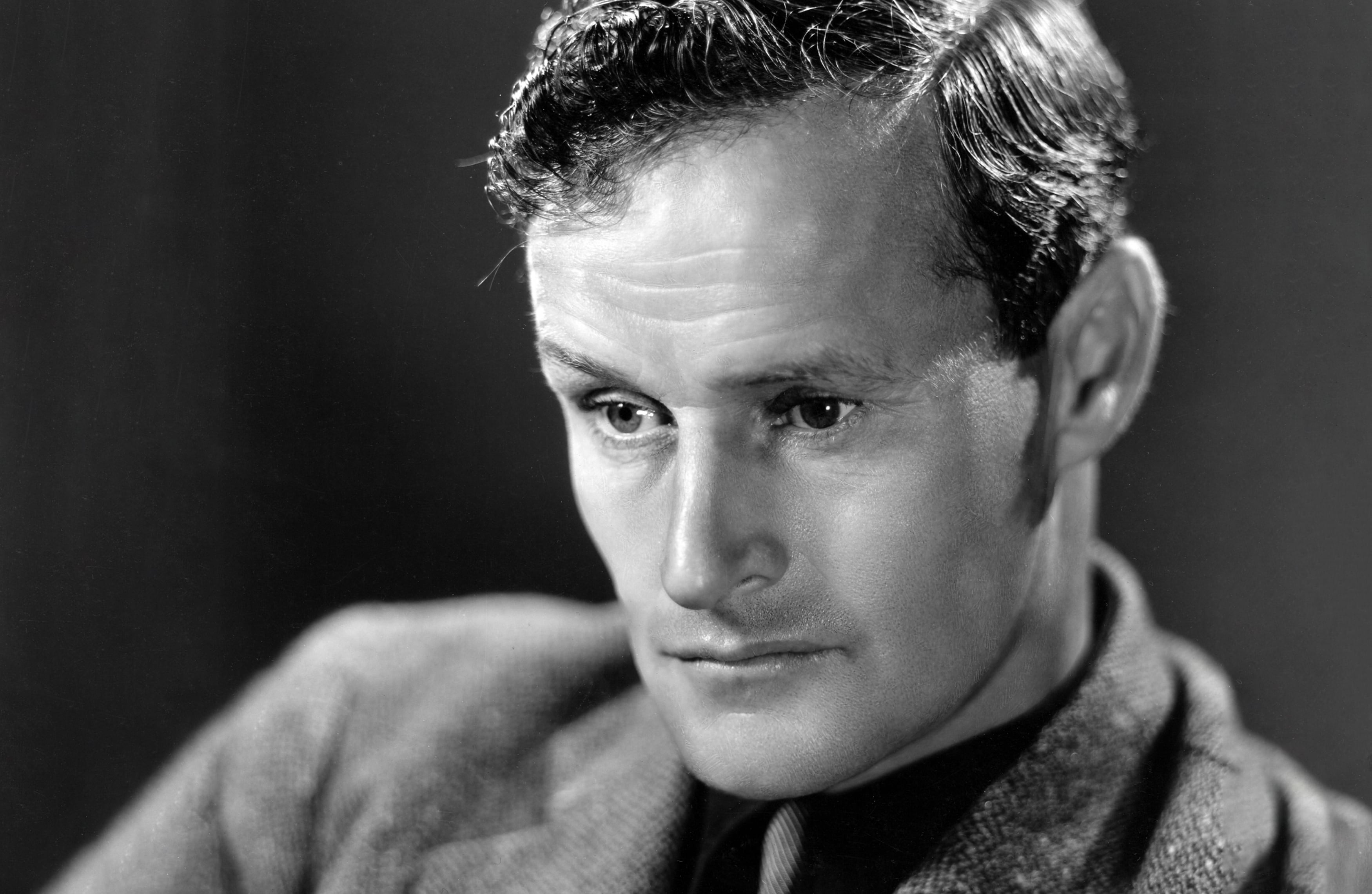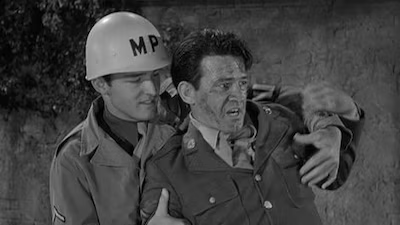William A. Wellman

About
Biography
Filmography
Family & Companions
Bibliography
Notes
Always the aviator, Wellman's body was cremated and strewn over the US by plane.
He was awarded Croix de Guerre in 1918.
Biography
Having directed nearly 80 motion pictures throughout his career, William Wellman was an extraordinarily prolific director whose output contained a number of cinematic gems amidst a rather unexceptional canon. Wellman started his career during the silent era and had the prestige of directing the World War I actioner, "Wings" (1927), which was the first motion picture to ever win an Oscar for Best Picture. He spent the next 10 years directing a string of forgettable movies until reaching new heights with the scathing screwball comedy "Nothing Sacred" (1937) and the original version of "A Star Is Born" (1937), which earned him the only Academy Award of his career. Wellman went on to direct the dark and gritty Western "The Ox-Bow Incident" (1943), the tone of which ran counter to America's thirst for escape from the war, therefore sealing its fate as a commercial failure, though it lived on as one of Wellman's masterpieces. From there, he helmed a number of great Westerns and war-themed movies like "The Story of G.I. Joe" (1945), "Yellow Sky" (1948) and "Battleground" (1949). Late in his career, Wellman teamed with John Wayne on the terror-in-the-skies thriller "The High and the Mighty" (1954), but rode off into the sunset on the back of several mediocre films until his retirement in 1958. Though his career was uneven, Wellman directed enough film classics to be considered one of the premier directors of Hollywood's Golden Age.
Born on Feb. 29, 1896 in Brookline, MA, Wellman was raised by his father, Arthur, an insurance broker, and his mother, Celia, and was the descendent of Francis Lewis, one of the signors of the Declaration of Independence. An aimless youth, whose misspent adolescence included expulsion from Newton High School for delinquent behavior, Wellman worked as a salesman and in a lumber yard before playing professionally for a minor league hockey team. It was during his time as a hockey player that he met Douglas Fairbanks, who was impressed with Wellman's play and suggested that he become an actor. Meanwhile, the United States entered World War I and Wellman first joined the effort as an ambulance driver before joining the French Foreign Legion as a fighter pilot, becoming the first American to serve in the Lafayette Flying Corps. He recorded three kills before being shot down by the Germans in 1918. Though he survived the crash, Wellman was left with a permanent limp for the rest of his life.
Upon his discharge from the Foreign Legion with the rank of sergeant, Wellman wrote and had published Go Get 'Em! (1918), an account of his time spent in the war. He joined the United States Army Air Service, but was too late to fly in the war and instead taught combat tactics to new pilots in San Diego. In the meantime, he became reacquainted with Fairbanks, who invited him to Hollywood to appear in a film. Garbed in full military splendor, Wellman greeted Fairbanks and was promptly offered a substantial part in "Knickerbocker Buckaroo" (1919), but he found the experience unbearable and acting an unmanly pursuit. He opted instead for a directing career and worked his way up the ranks, first working as a messenger boy which including delivering fan mail to his estranged first wife, actress Helen Chadwick, whom he married in 1918, only to separate a month later. Wellman also worked as a prop man and eventually moved over to 20th Century Fox, where he became an assistant director. Eventually, he made his debut as a director with the Fox offerings "Second Hand Love" (1923), "Big Dan" (1923) and "The Man Who Won Love" (1923) being among his first motion pictures.
Over the next few years, Wellman cut his teeth on several Westerns like "Vagabond Trail" (1924), "Not a Drum Was Heard" (1924) and "Circus Cowboy" (1924), before turning to contemporary films like "When Husbands Flirt" (1925), "You Never Know Women" (1926) and "The Boob" (1926), which featured a young Joan Crawford in a supporting role. Wellman returned to his passion for flying when he directed "Wings" (1927), an aerial adventure about two would-be fighter pilots (Charles "Buddy" Rogers and Richard Arden) vying for the love of the proverbial girl next door (Clara Bow). Not exactly "Top Gun" in terms of in-air action, "Wings" still presented spectacular aerial dogfights and became significant for becoming the first film to win Best Picture at the Academy Awards. From there, he directed everything from dramas like "Beggars of Life" (1929) and "The Man I Love" (1929) to sports-themed comedies such as "Maybe It's Love" (1930), before helming the definitive crime thriller "The Public Enemy" (1931). Starring James Cagney as a Chicago gangster who rises to the top during Prohibition, the film was derided at the time for being violent and low-brow, as perfectly exemplified by Cagney smashing a grapefruit in the face of his mistress (Mae Clark). Though "The Public Enemy" helped give rise to Hollywood's infamous Production Code, it lived on as one of the most revered and imitated gangster films ever made.
Wellman slogged through a number of forgettable films like "Night Nurse" (1931) starring Barbara Stanwyck, "The Conquerors" (1932) with Richard Dix, and "Love is a Racket" (1932) starring Douglas Fairbanks, Jr., before directing his fourth wife, Dorothy Coonan, in the Depression-era drama "Wild Boys of the Road" (1933). From there, he directed a string of genre films like "College Coach" (1933), "Stingaree" (1934), "The Call of the Wild" (1935) with Clark Gable, and "The Robin Hood of El Dorado" (1936). Pulling himself back into Oscar contention after a decade of relative quiet, Wellman wrote and directed the original version of "A Star Is Born" (1937), a behind-the-scenes showbiz drama about a small town girl (Janet Gaynor) who gets her big showbiz break from an alcoholic star (Fredric March) on the downside of his career. The two fall in love, as the girl rises to stardom while he descends into booze-soaked mediocrity. The expertly-crafted film was a hit and earned seven Academy Award nominations, including Best Picture and Best Director. Wellman shared an Oscar for Best Original Story with writer Robert Carson, the only time the director took home a statuette in his career.
That same year, with a spectacular one-two punch, Wellman directed another instant classic, "Nothing Sacred" (1937), a scathing screwball comedy starring March as a disgraced newspaper reporter who seeks redemption by covering the story of a woman (Carole Lombard) allegedly dying from radiation poisoning, only to discover that not only is her story a fraud, but that he has fallen in love with her as well. After the action drama "Beau Geste" (1939) starring Gary Cooper, Wellman directed Gene Tierney in the World War I drama "Thunder Birds" (1942) and Barbara Stanwyck in the expansive period drama "The Great Man's Lady" (1942). With "The Ox-Bow Incident" (1943), Wellman directed one of his all-time masterpieces, a didactic drama about the consequences of unjustified lynching. Made at a time when audiences were seeking relief from the war, "The Ox-Bow Incident" was a downbeat film that lost a bundle at the box office despite featuring star Henry Fonda, but went on to become a classic Western about the perils of mob rule. He went on to helm two fine war films, "The Story of GI Joe" (1945) starring Robert Mitchum and "This Man's Navy" (1945) with Wallace Beery, before turning his attention to comedy with "Magic Town" (1947), a Frank Capra-esque satire featuring James Stewart as a cynical pollster whose discovery of the perfectly balanced small town leads to a barrage of media coverage and a huckster looking to take advantage of the locals.
Returning to Westerns, Wellman directed Gregory Peck in "Yellow Sky" (1948), where the future Atticus Finch played a not-so-bad outlaw who finds himself protecting an old man (James Barton) and his granddaughter (Anne Baxter) from his own gang after they discover a hidden cache of gold in a ghost town. He earned his second Academy Award nomination for Best Director for "Battleground" (1949), a grittily realistic look at the Battle of the Bulge as seen through the eyes of American soldiers. Hailed by critics, the film dared to question heroism in war only four years removed from the Allied victory in World War II and served as a precursor to later anti-war films in the wake of Vietnam. Following the Westerns "It's a Big Country" (1950) and "Westward the Women" (1951), he teamed with John Wayne for the World War II adventure "Island in the Sky" (1953) and "The High and the Mighty" (1954), a terror-in-the-skies thriller that brought him his third Oscar nomination for Best Director and presaged the disaster flick craze of the 1970s. From there, Wellman directed several average films like "Track of the Cat" (1954) with Robert Mitchum, "Blood Alley" (1955) starring John Wayne, "Darby's Rangers" (1958) with James Garner, and "Lafayette Escadrille" (1958) starring Tab Hunter, before calling it a career. He died on Dec. 9, 1975 from leukemia at 79 years old and had his ashes scattered at sea. Wellman was survived by fourth wife, Dorothy Wellman, whom he married in 1934 after three previously failed marriages.
By Shawn Dwyer
Filmography
Director (Feature Film)
Cast (Feature Film)
Writer (Feature Film)
Producer (Feature Film)
Production Companies (Feature Film)
Cast (Short)
Life Events
1917
Joined Foreign Legion, then Lafayette Flying Corps; plane shot down during WWI; sustained lasting back injuries; awarded Croix de Guerre and other honors
1918
Returned to Boston as war hero; authored (with a ghost writer) his story, "Go, Get 'Em"
1918
While a flight instructor at Rockwell Field, San Diego, became friendly with Hollywood figures
1919
On invitation from Douglas Fairbanks, made film acting debut in "Knickerbocker Buckaroo"
1921
Moved to Fox as assistant director
1923
Took over direction of "The Eleventh Hour" from mentor Bernard J Durning
1923
Solo directing debut, "The Man Who Won"
1925
Joined MGM as assistant director
1925
Resumed full-fledged directing chores at MGM with "The Boob" (released after his Columbia effort, "When Husbands Flirt")
1927
Directed first major success (winner of the first Academy Award for best picture), "Wings"
1936
First film as co-screenwriter (also director), "The Robin Hood of El Dorado"
1938
First film as producer (also director), "Men with ings"
Photo Collections
Videos
Movie Clip












Trailer












Family
Companions

Bibliography
Notes
Always the aviator, Wellman's body was cremated and strewn over the US by plane.
He was awarded Croix de Guerre in 1918.
Received five US citations.











